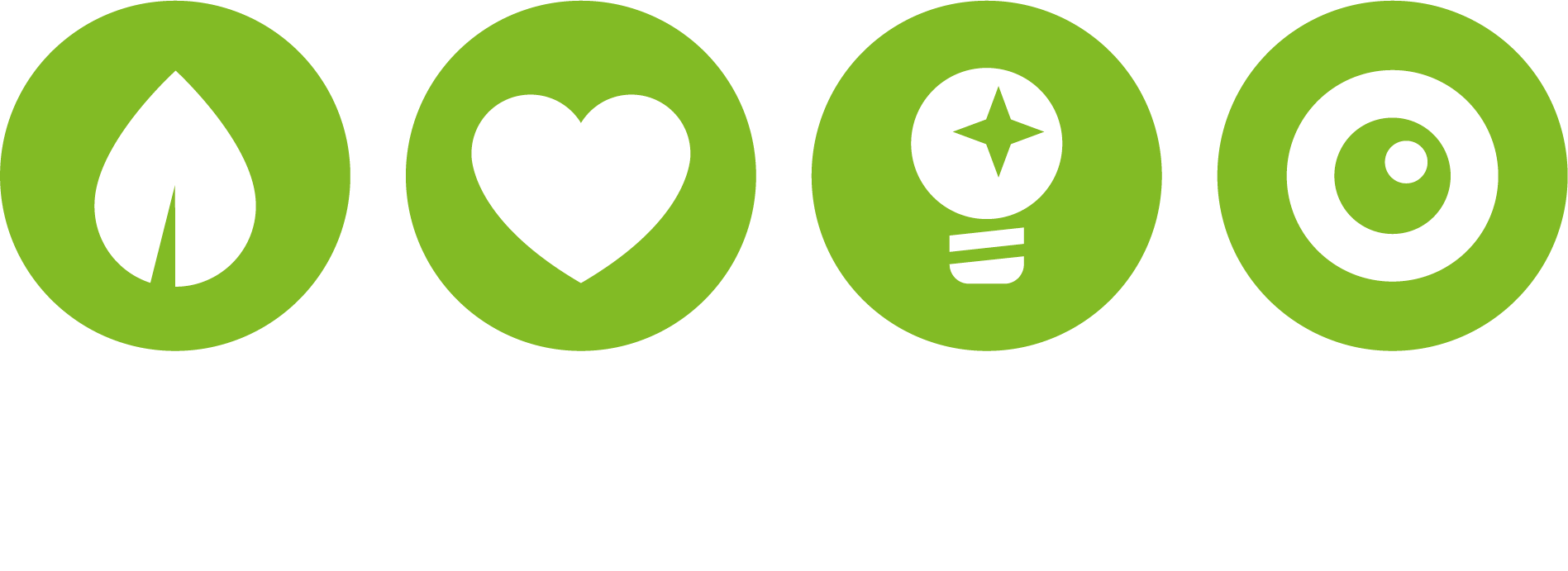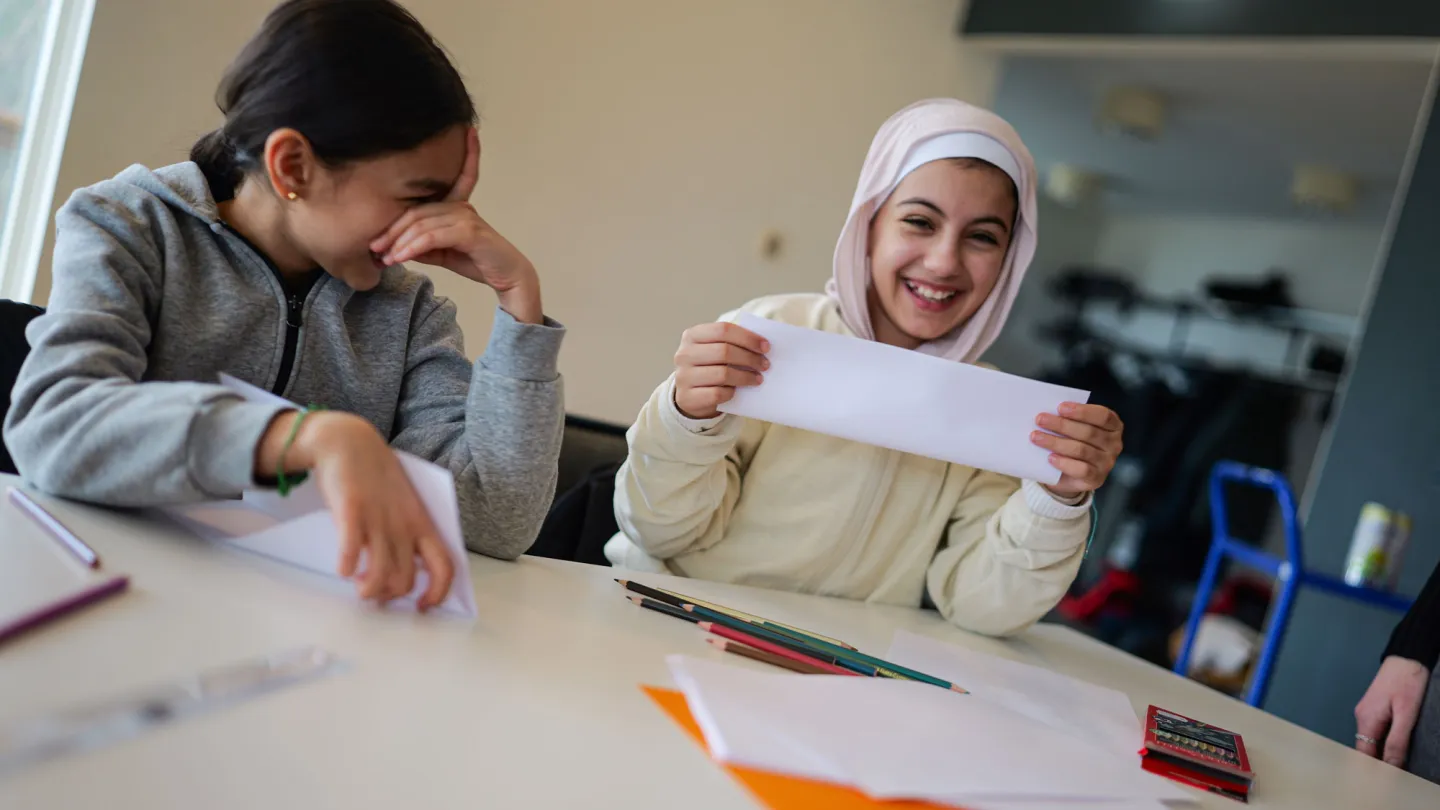The road to a finished idea
In a collaboration between Universeum and our main partners SKF, Saab and Volvo Cars, fifth graders from all over Gothenburg will have the chance to develop their own scenarios of what the cities of the future will look like. The Innovation Challenge is intended to open children's eyes to technology, science and sustainable development.
A study visit to Universeum.
What is it that makes a city sustainable?
"A sustainable way to get energy. You should not use charcoal!
"To make everything fair, for everyone who lives in the city!
It's mid-February and a fifth grader from The English School (ESG) has settled down in the learning environment Vislab to get an introduction to her study visit to Universeum. Today, they will take part in The Virtual Gothenburg, take a tour of the Rainforest and hopefully gain new insights to take home to the classroom.

Let your thoughts flow freely.
Sabina Birgersson is an educator at Universeum and guides the class through the house. Gradually, the initial caution turns into discussion.
"Do you have any good ideas on how to reduce noise?"
"Maybe a little fewer cars...?
"Can you build smaller roads?
The cities of the future.
At this time, the Innovation Challenge has been going on for just over three weeks and the work is in full swing at the participating schools: in addition to ESG, Kvibergsskolan, Eklandaskolan, Assaredsskolan, Klarebergsskolan, Böskolan and Azbuka Lyceum. In total, around 300 students and teachers are participating in the project.
The theme for 2025 is Cities of the Future. On behalf of the participating companies, the participating school classes will develop prototypes and proposals for what a future, sustainable city can look like. How can you build a safe and secure city that is also energy efficient and circular? Based on the global goals, students are encouraged to think about issues such as what they can take with them from today's cities – and develop in the future. But also: what is important to you, the next generation of adults?
Student inspiration at Saab.
A few weeks later, another fifth grader, this one from Kvibergsskolan, crowds outside one of Saab's premises in Kallebäck. Here they have learned more about the business and an introduction to what a radar system is. The day ends with a paper airplane competition – to test yourself in practice through a proven innovation process: be inspired → generate ideas → develop → evaluate – and then you start again. As it should be, many of the students find it difficult to sit still – but when it's time to get to grips with the practical element, the room is filled with movement and enthusiasm.

The innovation process in practice.
"We see our collaboration with Universeum during the Innovation Challenge as an excellent opportunity to both contribute to the local community and to create interest in STEM subjects among schoolchildren, our future," says Carla Lif, Head of Sustainability at Saab Suverillance.
She continues:
"The student inspiration at Saab focused on the innovation process: it's a skill that we use on a daily basis and it was great fun to apply it to the aircraft competition with the children. Now it is up to the classes to apply the innovation process to concrete ideas for how we can create a sustainable and safe city where everyone feels safe, today and in the future.
People, nature and technology.
The Innovation Challenge is intended to clarify the connection and interaction between people, nature and technology. By allowing students to solve real-world challenges, they develop their abilities to think critically, collaborate and find sustainable solutions for the future. For a couple of weeks during the spring, the science lessons are devoted to bumping and wetting, discussing and developing their prototype.

Put all the ideas on a table.
Simon Sellius is a teacher at ESG who has two classes participating in the challenge. He says that he has deliberately tried to stay in the background so that the students have free space to brainstorm ideas. Not all lessons have been about the Innovation Challenge – but many have been linked to the project. There has been a lot of room for all kinds of thoughts, and everyone has had to do it their way. Public transport, housing, apps – a wide range of ideas that will now be put together into a single competition entry.
"We came to the conclusion early on that everyone can work with exactly what they want, in whatever constellations they want. Then we put everything on a table, and that's what it will be. It will be a bit cluttered and varied, but I think there are many good ideas! Above all, it has been rewarding to get out and look at things, make study visits and take ideas home with you. The bottom line is that it's so much fun!
And the winner is...
In April, the students are welcome back to Universeum to show off their projects. A jury, consisting of representatives from SKF, Saab, Volvo Cars and Universeum, then takes part in all projects and makes its assessment based on innovation, new thinking, how it is linked to the global goals and how they are presented to the public.
The jury selects a winner who receives SEK 10,000 to put into the class fund. Who will be the winner of the 2025 innovation challenge will be announced on 9 April.




